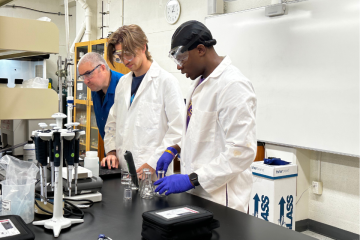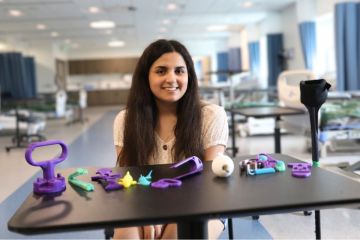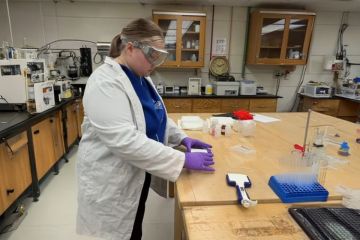Professor Secures Nearly $1M to Innovate Orthopedic Care

Musculoskeletal injuries, such as bone fractures and dislocations, affect nearly one-in-two adults in the United States. These injuries often result in pain, swelling, and limitations in joint movement.
Despite the common nature of this kind of injury, there currently is no tool on the market that can accurately measure joint mobility, which is key for effective treatment.
Dawn Gulick, professor in the Institute for Physical Therapy Education, is aiming to address that need with the introduction of her creation, the Mobil-Aider. Her work demonstrates the innovative spirit of Widener faculty, and underscores the role our professors play in preparing the next generation of professionals, while informing the future of the professions they go on to lead.
Gulick was recently awarded $748,000 in federal funding from the National Science Foundation (NSF) to further develop and finalize the product for the market.
“This grant is a game changer,” Gulick said. “It puts me in a position to be able to complete the project.”
The new funding comes through the NSF’s highly competitive Small Business Innovation Research (SBIR) program. Gulick was awarded more than $222,000 in a first phase of SBIR funding last year. The second grant brings her total national funding close to $1 million.
“Now we’re into phase 2 which assigns two major tasks: fine tuning the device and developing strategies for commercialization,” Gulick said.
Fine tuning includes shifting her attention away from 3D-printing and toward injection modeling, which Gulick explains will “reduce the cost of production and increase the quality of the product.”
Gulick invented the FDA-approved and patent-pending Mobil-Aider to improve the way musculoskeletal injuries in the shoulder, elbow, wrist, knee, and ankle are evaluated. Traditional treatment for these injuries generally involves clinicians assessing joint movement by touch, which can produce results that vary among caregivers.
Gulick’s cost-effective, easy-to-use device removes inconsistencies by translating joint movement with numerical data to enhance consistency and reliability.
The Mobil-Aider poses a tremendous benefit not only to clinicians and patients, but to students preparing to enter medical and rehabilitation fields – especially those who have worked alongside Gulick as she has researched and developed the product.
It’s a learning opportunity for the students to see what goes into product development and also to see how the device is used. A quantitative tool such as the Mobil-Aider would allow students to practice techniques that will inevitably enhance their practice of orthopedics. —Dawn Gulick
The field also stands to benefit from the device.
“This device could transform the ability to collect data on joint measurement procedures, to begin to populate the literature on examination and treatment efficacy and to begin to develop best practice protocols,” Gulick added.
Looking ahead, Gulick envisions expanding the Mobil-Aider’s use and impact by developing a prototype designed specifically for the operating room.





